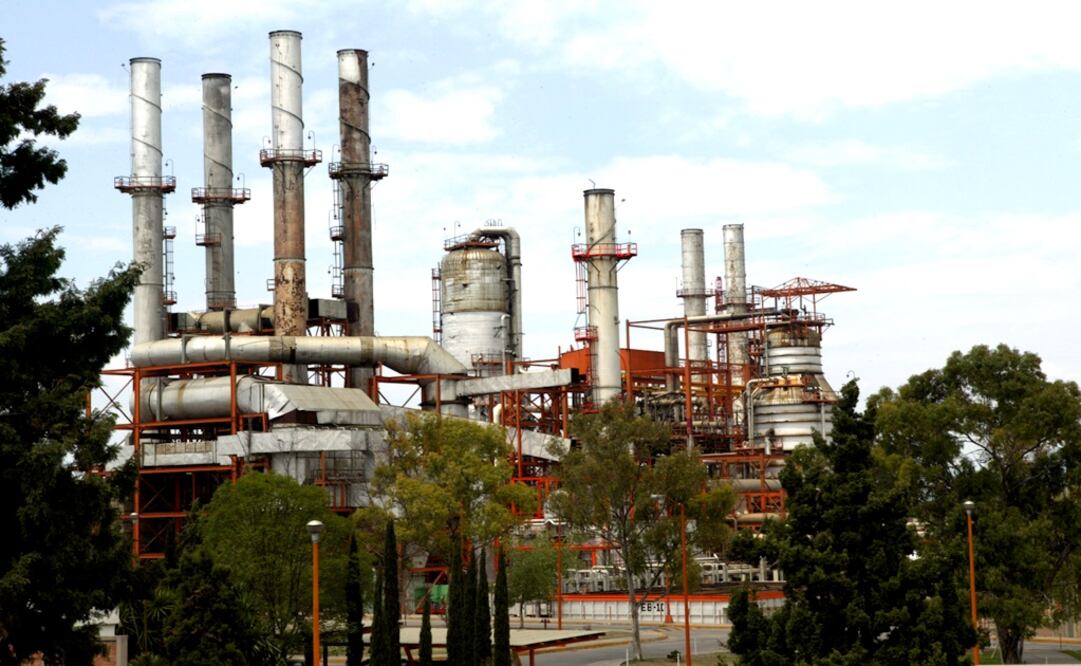Más Información

Senador del PT propone crear televisión, radio y periódico de la 4T; debemos hacer frente a medios de derecha, dice

A Andy se le juzga “de manera exagerada” por ser hijo de AMLO: Luisa Alcalde; viaje a Tokio “no contraviene” austeridad, dice

Segob solicita que juez no conozca avances del amparo que Ganador Azteca tramitó; Rebolledo Peña pidió desbloquear Bet365 y Betano
Mexico’s state oil company Pemex and the authorities of the energy sector will face a serious problem in 2020: What to do with the fuel oil produced in the refineries operated by the oil company?
The entry into force of the new rules of the International Maritime Organization (IMO 2020) that forbid vessels to use fuel oil with high sulfur content ( over 0.5% ) affects not only national production but its commercialization in the domestic market, as well as its exports.
Pemex’s product not only exceeds regulation standards by having between 4% and 4.5% of sulfur, in addition, no one will want to buy it unless it contains a sulfur content equal or minor to 3% .
Did you know
?
Additionally, trying to export it implies the risk of the country that receives it punishes Pemex for its low quality , considering the application of the new regulation will be in hands of IMO member states.
The application of the measure, which was agreed on in 2008 , has been carried out gradually but Mexico did not get prepared for the process in the previous administration: 4.5% of sulfur before January 2012 , 3.5% by the beginning of 2012 , and 0.5% by January 1, 2020 .
The problem for Pemex is worse because, from the strategy to increase oil elaboration in the six refineries it operates, elevating the processing capacity of the National Refining System to cover up to 95% of the demand with national product, fuel oil will be produced in more quantity.
Pemex’s oil production for the next 11 years, a copy of which is in hands of EL UNIVERSAL , shows that fuel oil production will increase 45.7% between 2020 and 2023 , from 164,000 to 239,000 daily barrels on average.
As a matter of fact, during the first two years of the implementation of the new regulation, fuel oil will be the second product in relevance to be obtained in crude oil processing, and until 2023 it will be the fourth.
Have you heard Mexico will
?
This means that for each processed oil barrel in the 2020-2022 period , 21% of what is obtained will be fuel oil, and just after 2023 will it be of 11.3%.
Currently, Pemex exports 63.5 daily barrels on average, less than half of the national production, a volume that is in danger because global markets will be more demanding with sulfur content. This situation will impact negatively on the price of the product.
On average, the currency income left by fuel oil for Mexico in the last five years is slightly over USD $1.8 billion per year .
This situation will force Mexico to have an unprecedented surplus volume and to use it internally.
One option is for the Electricity Federal Commission (CFE) to use it intensively in the generation of electric energy, using the technological devices that eliminate polluting emissions and that have been used successfully for over 10 years in the plants of Punta Prieta in La Paz, Baja California Sur , and Mazatlán, Sinaloa , through the use of the Atmospheric Emissions Control System (SCEA) to solve environmental pollution produced during the oil burning process.
Have you heard of
?
In Mexico, there are 20 thermoelectric plants, of which the most important are the ones in Tuxpan, Veracruz , with a capacity of 2,000 MW; Tula, Hidalgo, that produces 1,546 MW; and Manzanillo , with 1,200 MW, which means that to use the national surplus fuel oil in the plants, the use of SCEA would have to be implemented.
According to CFE’s studies, the use of fuel oil in conventional thermoelectric plants is attractive in economic terms : the plants are amortized and they just need maintenance investments and a new SCEA environmental control, which costs less than a new plant.
With this technology, the CFE has the possibility of using fuel oil with high or low sulfur content. The cost of the national product with 4.5% of sulfur is of MXN $5.50 per liter and the imported one with 2% of sulfur is MXN $19.45 .
Did you know
?
mp
Noticias según tus intereses
[Publicidad]
[Publicidad]











